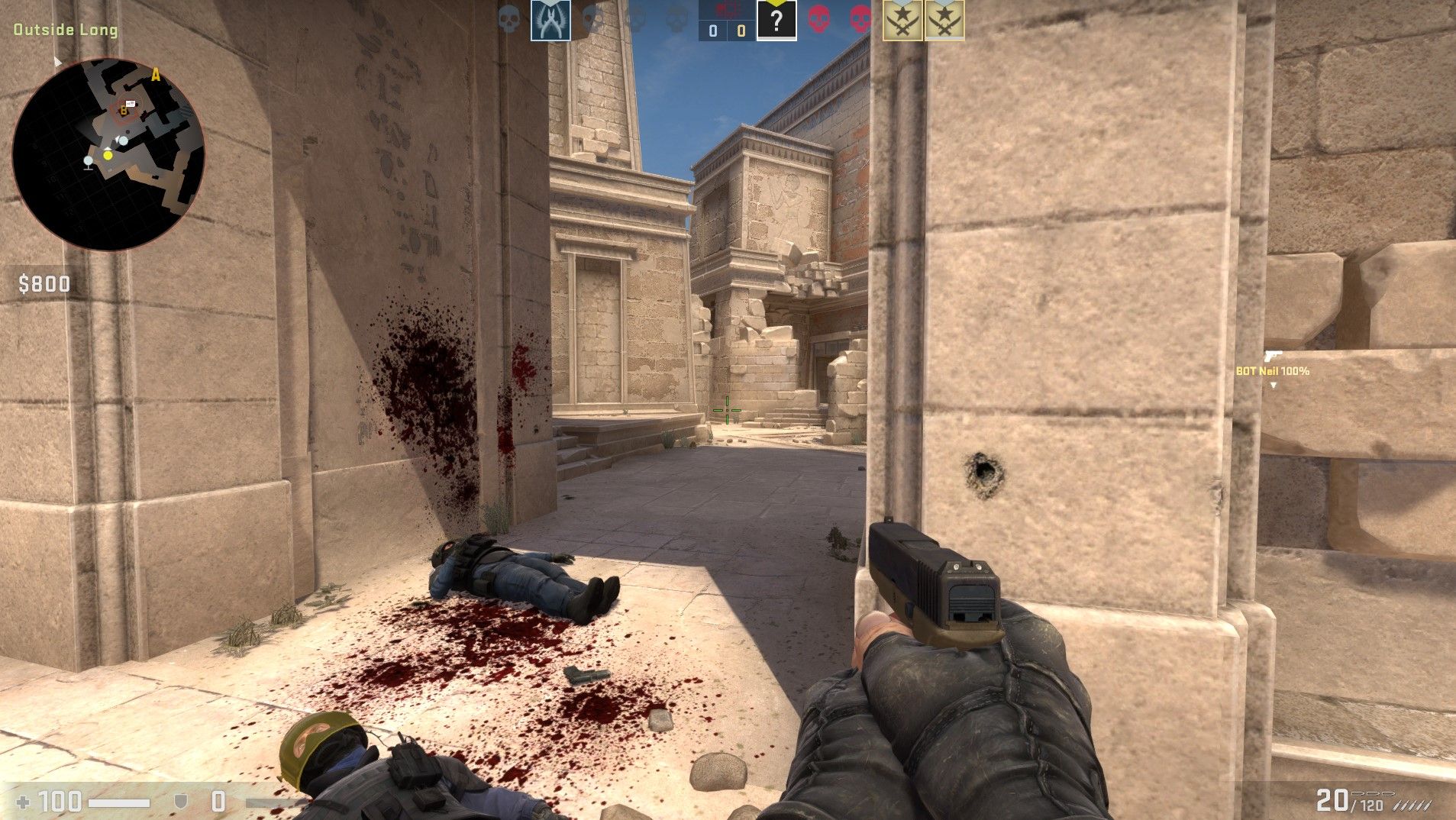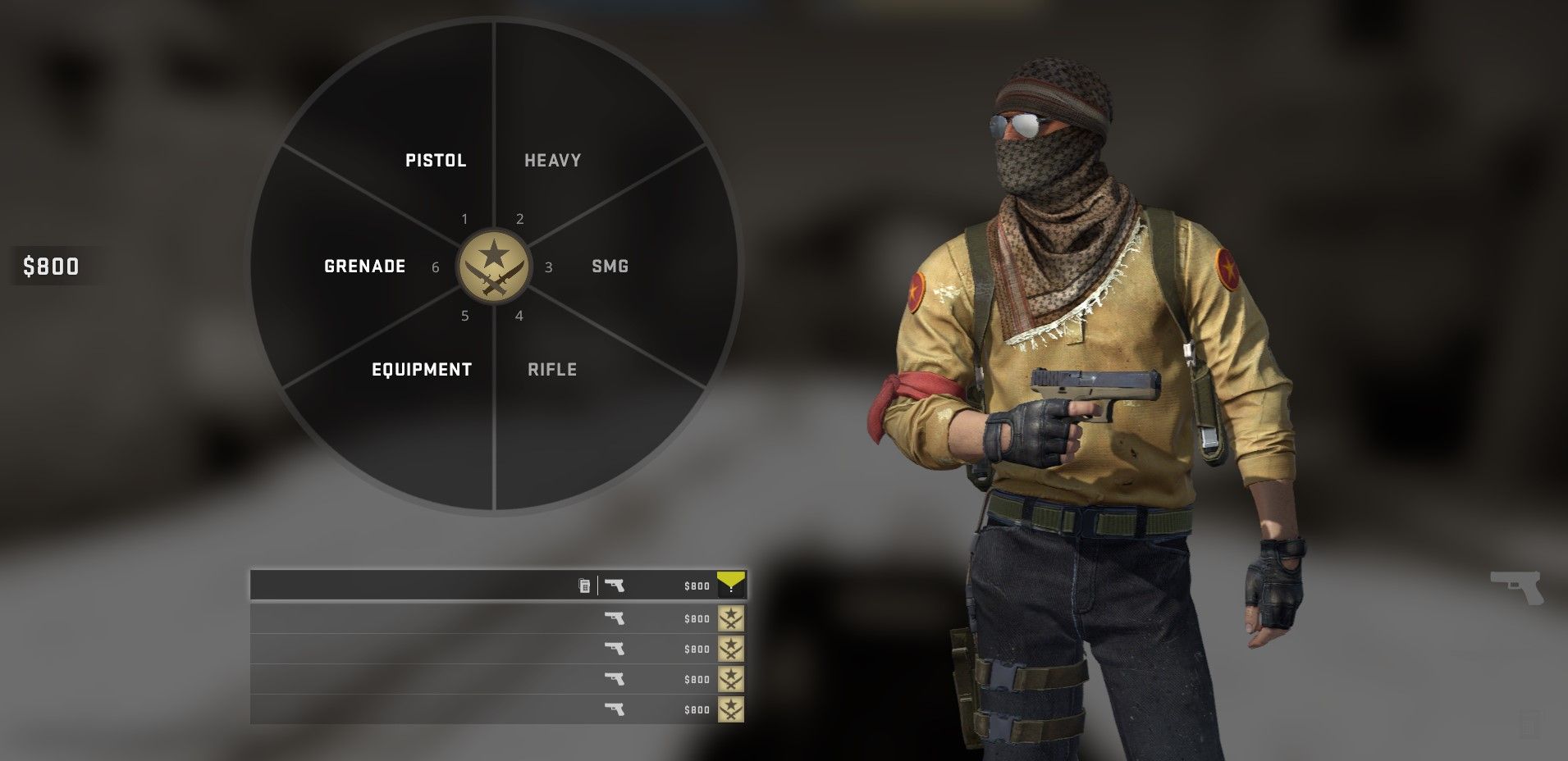The economy in CSGO is a differentiator among FPS titles and mastering it will lead to success
Together we’ll explore the cause and effect of purchase decisions, provide a general overview of the economy system, and provide best practices around buy timings.
What is the CSGO economy?
The economy in CSGO is a one-sided marketplace which, dependent on a player’s choice and cash flow, dictates what equipment and weapon(s) will be present in any given round. The economy is designed to make every round in CSGO important and provide either side an opportunity to gain/re-gain the advantage.
Each player will begin a match with $800 however during this first round you are only able to purchase pistols or armor. As the match progresses, you’ll have more $ available to spend across a plethora of weapons and equipment. The cash you generate in a CSGO match is dependent on kills, round wins or losses, defends, and/or defuses. All of these actions result in a reward or potentially a penalization if you’re the team killing type. The biggest cash flow impact comes from wins or losses of rounds.
Kill rewards
- Knife $1500
- Pistol (excluding CZ75-Auto) $300
- CZ75-Auto $100
- SMG (excluding P90) $600
- P90 $300
- Shotgun $900
- Heavy Machine Guns $300
- Rifles & Snipers (excluding AWP) $300
- AWP $100
- Grenade $300
- Zeus x27 $0
- Teamkill -$300
Team and objective rewards
- Kill all enemies: $3250
- Time runs out (CT): $3250
- Defuse bomb (CT): 3500 ($300 player reward)
- Bomb explodes (T): $3500
- Bomb planted but defused (T): Loss Bonus + $800
- Bomb plant: $300 player reward
Round wins and losses
As mentioned before the biggest impact to you and your team’s cash flow is from the winning or losing of rounds. Each round you’ll receive a reward dependent on the outcome of the round. Depending on what occurs in the match (Ts plant a bomb but CTs defuse it, Ts plant and it explodes, and a few other scenarios) you can either gain a lead or lose a lead in terms of the CSGO economy. Remember, the more money a team has the greater ability they have to purchase better weapons and equipment. The economy in CSGO does have a catch up mechanism for the losing team in which the losing team has their loss reward gradually increase. As a special rule to make pistol rounds less crucial, the first round of each half counts double for the loss bonus, meaning the losing team will receive $1900 for the second round (plus a potential bomb plant bonus).
Breakdown of loss bonuses per round lost (catch up mechanism)
- One: $1400
- Two: $1900
- Three: $2400
- Four: $2900
- Five: $3400
Types of economy rounds
In CSGO you’ll encounter five different types of economic rounds: ecos, anti-ecos, half-buys, full-buys, and forces.

Eco & anti-eco rounds
In an eco round, you’ll either buy light equipment or purchase no equipment dependent on the amount of money you want to bring into the next rounds. Essentially, eco rounds allow you as a player and team to save money to afford better weapons as well as equipment moving forward. However, this can be countered by the enemy team performing an anti-eco round so keep your intentions to yourself.
For an anti-eco round, you’ll purchase cheaper weapons such as SMG’s and avoid buying rifles or awps (essentially, you’re going to be a bit more frugal). However, you should still purchase utility to prevent rushes and other desperate strategies that teams typically try on eco rounds. This type of buy strategy is typically executed when you know the state of the economy of the enemy team and have eliminated the need to full buy.
Half-buy
This type of economic strategy is typically executed when your team’s economy is uneven or you’re attempting to knock down a stronger team a bit. Essentially the richer members on your team will spend approximately half of their money loading up while the poorer members will avoid spending anything if possible. The aim of the strategy is to prepare for a full buy during the upcoming round while trying to force the opposing team to have to rebuy for a few players as well.
Full-buys and forces
A full-buy, quite simply, is when a team buys all the needed armor, weapons, and utilities. This is the ideal scenario for a team to be in and really opens up the possibility of successful attacks or defends.
A force buy is used to try to stop the enemy team from gaining too much momentum. The forcing team will usually buy a mixture of smgs and/or rifles, with the rifles often using the last available funds instead of utility. Stopping the enemy’s momentum can really stop a runaway lead by the enemy, however it’s a huge risk as it can set the forcing team back 1-2 rounds if it doesn’t work out.
Timing your buys
Determining when to buy in CSGO is highly dependent on the previous round, the enemy team’s economy, and whether you’re on T or CT side. CTs, especially, will require larger sums of money to acquire equipment and weapons due to their increased prices. Try to memorize or keep note of money required for specific combinations so you can plan your rounds accordingly. For example, for full armor and a rifle as a CT you’ll need $4100 (or $3900 if you choose to equip the M4A1-S but this is more of a solo queue play). Learn this and others as you progress your understanding of the CSGO economy.
There are a few buy scenarios that are generally followed however, they only stay relatively true for the beginning part of the match. Past the first few rounds, your buying will be dependent on your ability to track the enemy team’s economy and understanding your counter buys. Each match will play out differently and will require you to be adaptable according to the current situations. A few key tips, always remember how many enemies survived the previous round, what weapons were in use, how much is required for a full buy in the next round, if you’re able to supply a teammate through purchasing a weapon for them or dropping a weapon if you survived the previous round, and overall coordinating with your team.
Understanding the economy in CSGO can be confusing and a daunting task to any player but if you keep track of the enemy team’s economy, how much they’ll need for a full buy in the next round, and how you can use your situation to help your team, you’ll eventually understand the concepts and strategies that will help you become a master of the economy.

